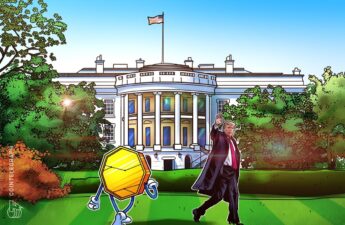Rumblings from the belly of the Washington beast are being heard in the bitcoin world. President Joe Biden has generated tremendous controversy by nominating Saule Omarova to head the Office of the Comptroller of the Currency (OCC).
Brian Brooks showed in 2020 how the OCC can be a powerful force on the regulated side of bitcoin, so it’s worth understanding the dispute around Omarova, and what her views are. As with other regulators, she can not stop bitcoin; however she could throw some painful roadblocks along the way.
The 2020s are shaping up to be a contest of ideas. The petrodollar system is fraying, so there is active discussion about what comes next. Bitcoiners are working hard to present a vision of a free and open monetary network, but entrenched elites are also generating ideas. It makes sense to go into the “heart of darkness” and understand these ideas, in order to better present a contrasting, more compelling vision in the coming debates.
Personal Background
Omarova has an impressive life story. Born in a small village in Kazakhstan under Soviet rule, she was dedicated to academics, and won a superior honor for someone from “the sticks” – a Lenin scholarship to Moscow State University. Her thesis was on “Karl Marx’s Economic Analysis And The Theory Of Revolution In Das Kapital.”
Playing devil’s advocate for a moment, it was impossible to get ahead in the U.S.S.R. without praising Marx and his ideas. Such a thesis is not immediately damning. However, she has refused to release her thesis, despite a request from Pat Toomey (R-PA) on the Senate Banking Committee. Her refusal raises many questions.
The People’s Ledger
The main controversy stems from a paper Omarova authored in the Vanderbilt Law Review of October 2021 titled “The People’s Ledger: How To Democratize Money And Finance The Economy.” It’s anyone’s guess whether the title is intentionally provocative, with a Socialist-flavored name like “The People’s Ledger.” The paper is available online here.
Omarova sees a problem with current CBDC proposals as being piecemeal and incremental to the existing system. Her proposal takes CBDC’s to their logical conclusion. All bank deposits would be moved to the Fed Reserve Board, named “FedAccounts.” This transformation of the liability side of the Fed would logically lead to a radical reshaping of the Fed’s investment portfolio, and a massive expansion of the Fed and the government’s role in shaping the economy and investment flows.
Interestingly, in the introduction, Omarova makes a statement that many bitcoiners would agree with.
“After decades of rising inequality, systemic instability, and relentless concentration of economic power, ordinary Americans are demanding a greater say in the distribution and use of financial resources.”
Omarova notes that “bitcoin and other cryptocurrencies” are a manifestation of this demand. However, she then immediately lumps “crypto-assets” together with Gamestop and UBI, thus showing a shallow understanding of the bitcoin phenomenon: Gamestop/UBI are attempts to gain more fiat dollars. Bitcoin seeks to re-engineer the fundamental structure of money.
Franchise Finance
Omarova describes the current structure as “public-private franchise finance.” Fed liabilities become the assets of private banks, in the form of bank reserves. The private banks then allocate money into the economy by lending, and they also multiply money through fractional-reserve banking.
Under this framework, the Fed “modulates” the supply of money, while private banks “allocate” and “multiply” that money into the real economy. Omarova extends this with an interesting description of the growth of shadow banking. Specifically, nonbank financial institutions may also multiply money through rehypothecation and securitizations.
The paper makes a strong and clear proposal that the current financial structure is inefficient. According to Omarova:
“In the franchise model of finance … the sovereign public must issue and modulate the supply of sovereign credit-money. This article argues that, in addition, it can and should allocate the critical quantity of that vital resource.”
In this quote, the “sovereign public” refers to the government, as the representative of the public.
This is the core idea – that the Fed and/or government should be determining what the important sectors of the economy are, and direct credit there. She develops this further by noting that private banks did not use their QE-generated funds for lending to businesses, but rather hoarded their reserves, or used them for trading activities.
There are several elements of hubris to the proposal. The most obvious element is the assertion that a governmental body would be better than private citizens at allocating capital. But there also seems to be no introspection as to why banks changed their long-standing behavior of making loans, and instead dialed back the loans in favor of trading activities. There is no examination of previous efforts to “democratize” finance and ensure stability, and how the resulting incentives led to the current state of affairs.
Another hubristic element is calling private banks “inefficient” for not behaving as expected when receiving funds from QE. There is a deeply unscientific thread in modern academia: Often when reality does not perform according to model predictions, it is not the models which are judged as failures, rather it is assumed that reality must change in order to fit expectations.
Bitcoin fixes this. By maintaining decentralization and “rules without rulers,” bitcoin will make reality ascendant again. Bad academic models will be forced to change in order to describe the actual world more accurately.
Not Letting The COVID-19 Crisis Go To Waste
In bringing COVID-19 into the discussion, Omarova employs the classic tactic of not letting a crisis go to waste. She notes that in March of 2020, the Fed started buying corporate credit, and thus taking an allocative role in the market.
Omarova’s case here is weak, and not terribly accurate. She seems to know this, as she simply states that the Fed did “massive direct purchases of corporate debt,” with no supporting data, except for a footnote pointing to the Fed’s website describing its Primary and Secondary Corporate Credit Facilities:
https://www.federalreserve.gov/monetarypolicy/smccf.htm
If you actually read the Fed’s reports, it becomes apparent that the Fed never lent more than a few tens of billions of dollars, in a market with size of $10 trillion. This hardly qualifies as “massive.” These facilities were wound down by August 2021 – two months before the publication of Omarova’s paper.
This section casts serious doubt on the fundamental thesis of the paper. The main logical flow is that the Fed has naturally started to take an allocative role of credit in the economy, so therefore the Fed and government should be much more involved in directing resources. However, if you take a few minutes to understand what the Fed actually did, then you see it was a far smaller effect than described, and the Fed had exited these crisis activities even before the publication of Omarova’s paper.
Continuing on, the paper makes the case that the COVID-19 response showed several shortcomings of the current system, specifically in forcing “unbanked” citizens to wait up to two months to receive their stimulus allocations as paper checks in the mail. This has led to calls for greater financial inclusion – the FedAccounts proposal to allow citizens to hold accounts directly at the Fed.
As before, there is little examination of why people in the U.S. are unbanked, through previous well-intentioned government policy. Omarova simply states that all citizens could be given FedAccounts, without taking the time to explain how current regulatory requirements could keep people out of the system.
An interesting sidenote is that the FedAccounts idea is based on a 2018 paper by Morgan Ricks, John Crawford and Lev Menaud, which may be found online here.
The abstract for this paper also calls for financial inclusion, but the main motivation is stated clearly right at the beginning:
“Central bankers around the world are increasingly worried that privately-controlled digital currencies will relegate them to the sidelines of monetary affairs.”
This statement is music to Bitcoiners’ ears, however we should be wary: central bankers will not give up their privileged monopolistic position without a fight.
FedAccounts
Omarova next goes into detail to describe FedAccounts. They exhibit the expected CBDC qualities. Money could be “helicopter dropped” into people’s accounts as a stimulus. It could be given on a progressive scale, with more money for people with lower incomes. Money could be given conditionally – the money is only valid if used toward government-approved ends.
The paper also makes a new proposal about CBDC – that the Fed should have the power to remove money from people’s accounts, if monetary contraction is desired, due to inflation or other causes.
Omarova seems to understand that there will be immense resistance to this idea, so she makes several suggestions to soften the blow. Money should only be removed in “emergencies,” and the Fed should communicate its intentions clearly, presumably so that people could take out living expenses before the hammer drops. She also suggests that, rather than strictly taking money away, the Fed could sequester money in a separate sub-account, and pay a relatively higher rate of interest until the money can be released again.
This is an atrocious idea, and presents an extreme overreach of government control into people’s lives. And thinking more fundamentally, a basic question is: The current sad state of affairs – uncontrolled debt, negative interest rates, etc – is the end result of the actions of monetary officials. Given their track record, why should these people be given MORE control over people’s money and affairs?
Fed Asset Portfolio
In this section, Omarova makes the logical conclusion that, with FedAccounts the liability side of the Fed would have a tremendous expansion, therefore the asset side would need to grow as well. It is here that the author’s ambitions truly shine, in terms of using the government as a tool for reshaping the economy.
Interestingly, Omarova dismisses concerns about the outsized role that the Fed would attain in shaping the economy:
“…these concerns are rarely substantiated by reference to anything more specific than deeply
internalized skepticism toward the government as an economic actor.”
A footnote is given with this quote, referring to an earlier paper by Omarova which describes the various ways that the government is already involved in the markets. This earlier paper also argues for an expanded government role in directing the national economy.
This paper asserts the government’s role to “correct market failures,” and it also references an Alexander Hamilton quote:
“[A central] bank is not a mere matter of private property, but a political machine of the greatest importance to the State.”
These quotes are pertinent in terms of recent quotes by Omarova in other forums, for example her statement that the government wants oil and gas companies to go bankrupt:
(h/t @MartyBent.)
There is a striking bit of cognitive dissonance here, that someone who grew up under Leonid Brezhnev and the Soviet system would somehow believe that the government would be better than the market at allocating resources.
The Hamilton quote is peculiar as well, for describing the central bank as a political tool. It’s a well-known historical fact that, whenever the central bank gets captured by the political class, then the currency will soon be debased. A typical example is currently on display in Turkey.
In Omarova’s framework, the asset side of the Fed’s balance sheet would have three main facets:
“New Discount Window Loans.” Private banks would replace their former deposit base by borrowing directly from the Fed in order to make loans into the economy. The Fed would exert control over private banks by lending money in order to meet policy goals, for example encouraging small- or medium-sized, or minority-owned businesses.
“National Investment Authority.” This is described as a government agency tasked with investing in public infrastructure and developing a national strategy.
“Open Market Operations Plus (OMO Plus)” Simply quoting here, the Federal Reserve Bank of New York“would conduct regular purchases and sales of a broad range of securities and other tradable financial assets with an explicit view to modulating volatile swings.”
Taken together, these three proposals assume an almost celestial degree of government competency to manage markets, and to identify over- and undervalued assets – with certainly higher competency than private market actors, such as fund managers. Omarova even references mortgage-backed securities as an asset class that might rise to bubble territory. It’s an almost comical example, and of course no mention is made of Ben Bernanke’s famous “subprime is contained” remark.
Conclusion
The paper’s final section delves into speculation, SimCity-style, into how financial markets and the economy would be transformed under this framework. But I must admit that my pain tolerance was reached, and I was unable to finish this last section.
As before, it’s impossible to escape the hubris of an academic attempting to redesign the economy, when their career only has six years of experience in private employment – and none as a manager or CEO.
There is little to no discussion of the pitfalls of giving the government this amount of control. This is especially curious, given the author’s first-hand knowledge of the corruption and stagnation under the U.S.S.R. of the 1970s and 1980s.
But make no mistake, these ideas are gaining influence in academic and policy circles. This paper appeared in the peer-reviewed Vanderbilt Law Review, and Omarova is President Biden’s nomination to lead the OCC.
In the coming inevitable reshaping of the petrodollar system, Bitcoiners should be aware of these ideas, in order to sharpen our own arguments for a free, decentralized, fair economic system which uplifts the individual.
In ending, it’s best to quote Omarova’s concluding remark. She clearly states that bitcoin has the potential to upset the system, and she seeks to exert control over the newly forming financial order:
“[These ideas are] … especially urgent in light of the ongoing digitization
of finance, which includes rapid proliferation of privately issued digital
money … [T]hese technologies threaten to undermine the fundamental balance of the sovereign public’s and
private actors’ relative powers and roles in the financial system. As
decades-old institutional arrangements come under increasing
pressure, what replaces them becomes a matter of utmost public policy
importance.”
This is a clear statement of the need to defend the current system’s exorbitant privilege.
This is a guest post by Wilbrrr Wrong. Opinions expressed are entirely their own and do not necessarily reflect those of BTC Inc or Bitcoin Magazine.
Source: https://bitcoinmagazine.com/culture/bitcoin-vs-the-peoples-ledger




